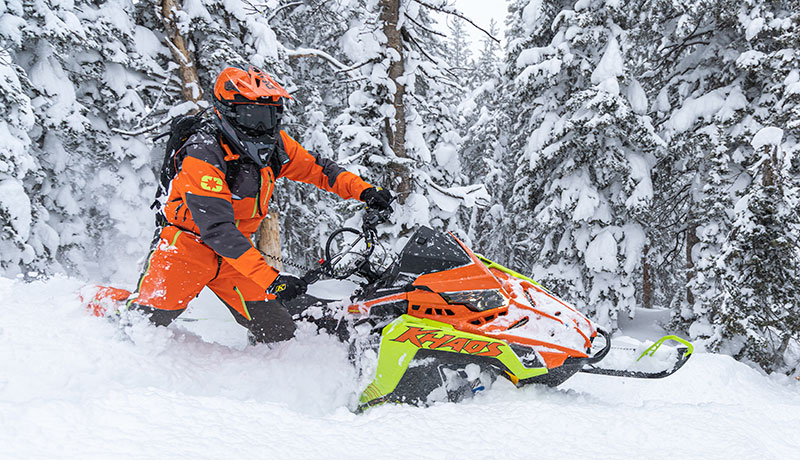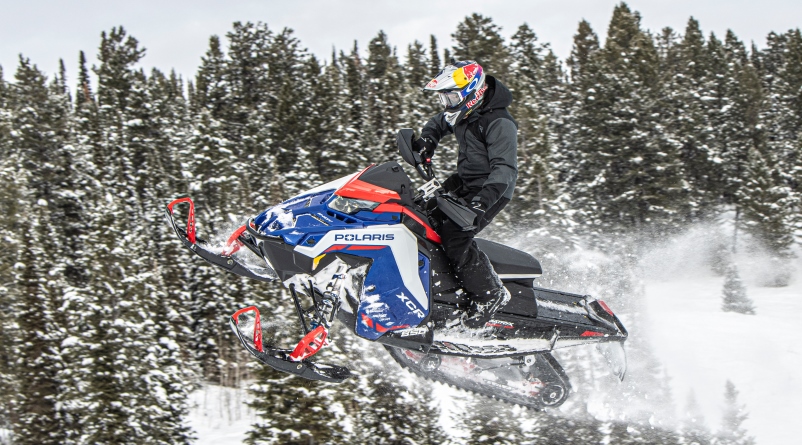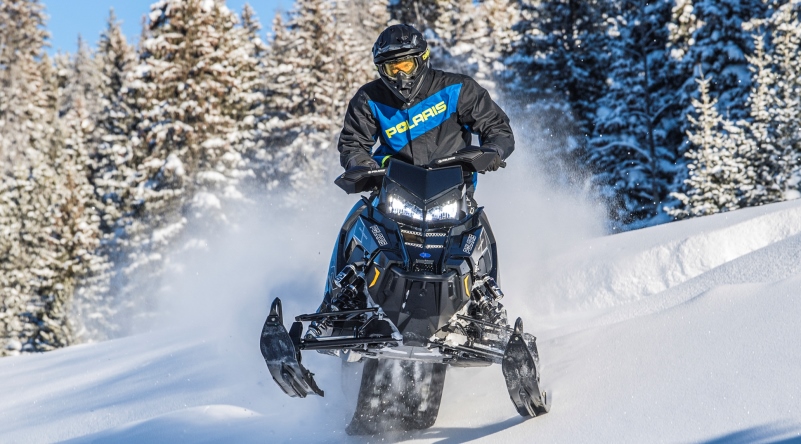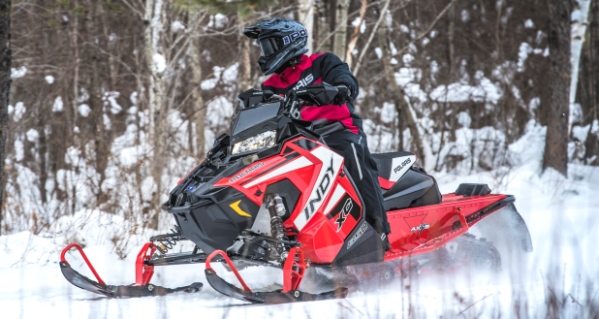 There is a certain appeal to hybrid sleds. For us it’s the romance of being able to strap a storage bag on the extended tunnel and head out for an off-trail adventure while still having the ability to drive down a trail without as much corner push and body roll as mountain sleds exhibit. The constant curiosity to find a new snowbound hideaway is why we’ve had at least one hybrid sled in our demo fleet since 2004. For 2010, our choice was a Polaris 800 Dragon Switchback.
There is a certain appeal to hybrid sleds. For us it’s the romance of being able to strap a storage bag on the extended tunnel and head out for an off-trail adventure while still having the ability to drive down a trail without as much corner push and body roll as mountain sleds exhibit. The constant curiosity to find a new snowbound hideaway is why we’ve had at least one hybrid sled in our demo fleet since 2004. For 2010, our choice was a Polaris 800 Dragon Switchback.
Many of our 800 Dragon Switchback’s hours were logged in the mountains last winter, including one trip to Cooke City, Montana, and another to The Snowies in south-central Wyoming. The Switchback was a comfortable, confidence-boosting machine in the backcountry, as a quick lean and pull on the handlebar was enough to lay the sled on its side to carve a turn or lift a ski over brush or a short tree.
Our Switchback stayed afloat well so we could blaze across meadows even when powder snow was flowing over the hood. More than once we went down a grade and then met a steep incline with deep blown-in snow — such as a creek crossing — thinking for sure the sled would auger in and leave us reaching for our Snobunje, but the track found traction and the chassis stayed afloat and climbed out.
The sled’s drawback on uphill and downhill runs was its track. As a hybrid, working hard to climb mountains might be expected, but the 136- by 1.25-inch Rip Saw would lose traction when going down a mountain, too — like snow would pack up in the tunnel. A longer track would help, but the sled would lose some of its on-trail performance.
We’ve always raved about the IQ front end, and when mated with Walker Evans Needle shocks with coil-over springs, this sled’s ability to absorb bumps and drive through a corner with minimal body roll is second to none in the crossover category, though it had more corner push than our short-track 2009 600 Dragon SP demo.
For the first 150 miles, our 800 had a horrendous lean hesitation around 20 mph, or about 5500 to 6000 rpm. A service technician from Polaris “did some TPS (throttle position sensor) stuff,” he said, adjusted drive belt deflection and told us to “give it a try.” His work turned our sled into an animal that ran spot-on. It had a quick throttle response and a hard pull from 10 mph, 75 mph or anywhere in between, and it improved the sled’s overall performance by generally making it more lively. As it turns out, our sled received an early version of a fuel map that is now available for other Liberty 800s that have this problem.
Ergonomics were good for stand-up riding over moguls or when off-trail. The firm seat is narrow at the front, allowing easy movement from side to side, and wider at the rear for comfort during relaxed riding. The 5-inch riser with flat handlebars feels solid, but the center mountain strap is firm without much flexibility. This works nicely when boondocking, but it clunked the driver’s helmet so often on the trail that we adjusted it down for less interference. The strap should be made from softer material.
Judging a crossover sled depends on your basis of comparison because in reality, compared to a 121-inch track you give up a little handling in order to gain a lot of snowmobility. On the flip side, compared to a mountain sled you give up some off-trail ability in order to gain on-trail stability. Based on its performance leading a dual lifestyle at all of the destinations where we rode it last winter, our 2010 800 Dragon Switchback was the best hybrid we’ve ever demo’d.






